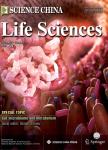Progress in the detection of human genome structural variations
Progress in the detection of human genome structural variations作者机构:Center of Functional Genomics Key Laboratory of System Biology Shanghai Institutes for Biological Sciences Chinese Academy of Sciences Shanghai 200031 China
出 版 物:《Science China(Life Sciences)》 (中国科学(生命科学英文版))
年 卷 期:2009年第52卷第6期
页 面:560-567页
核心收录:
学科分类:0710[理学-生物学] 0820[工学-石油与天然气工程] 0830[工学-环境科学与工程(可授工学、理学、农学学位)] 0808[工学-电气工程] 07[理学] 0817[工学-化学工程与技术] 0807[工学-动力工程及工程热物理] 0827[工学-核科学与技术] 071007[理学-遗传学] 0703[理学-化学] 0701[理学-数学] 0812[工学-计算机科学与技术(可授工学、理学学位)]
主 题:structural variation cytogenetic microarray PCR paired end mapping(PEM) next-generation sequencing
摘 要:The emerging of high-throughput and high-resolution genomic technologies led to the detection of submicroscopic variants ranging from 1 kb to 3 Mb in the human *** variants include copy number variations(CNVs),inversions,insertions,deletions and other complex rearrangements of DNA *** paper briefly reviews the commonly used technologies to discover both genomic structural variants and their potential ***,we highlight the array-based,PCR-based and sequencing-based assays,including array-based comparative genomic hybridization(aCGH),representational oligonucleotide microarray analysis(ROMA),multiplex amplifiable probe hybridization(MAPH),multiplex ligation-dependent probe amplification(MLPA),paired-end mapping(PEM),and next-generation DNA sequencing ***,we discuss the limitations and challenges of current assays and give advices on how to make the database of genomic variations more reliable.



